Facebook Group Growth Course
Continue checking back, as more will be added daily to this contextual course!
Hi there, Schieler Here!
I wanted to take a moment to Welcome you to this contextual Facebook Group Growth course.
In this series you will learn how to grow a Facebook group from 0 to 30,000 visitors as quickly as possible! While most similar courses will have you believe that this is a easy venture, I want to make it incredibly clear that it takes a lot of hard work, and time equity.
There is no easy button, and while it may seem daunting at times, I urge you to stick to what is outlined here for the best results, in the quickest amount of time.
With hard-work, dedication, and a few tricks, you will be on your way to building the biggest group in your niche!
Identifying Your Groups Solution Position Statement
The most important aspect of growing a group is to understand what solution you are providing to your group members! This solution is what people will find value in, recommend your group to others for and allow them to grow to their own potential as a desire or need that they find important.
I want you to think about this for a moment, and to really examine what problem you’re going to solve with your group. Ultimately this will determine how fast your group grows, and how many people will stay active.
Have your solution? Let’s create a solution position statement! Wait, what’s a solution position statement, you ask? In essence a solution position statement clearly articulates what you’re providing, to which audience and how you intend to deliver it to them.
It’s important to note that a solution position statement solves a real problem worth solving, while providing value to the target audience using the solution!
If you’ve never created a solution position statement, use the following framework:
“For [target audience] . . .” State the target user, market, or customer by naming its role or characterizing its group.
“ . . . who [statement of the need or opportunity] . . .” Describe what the target is trying to achieve or do while it’s having the problem. Rather than state the problem directly, state the need your target audience will have the opportunity to meet.
“ . . . that [statement of key benefit — the compelling reason to use the solution or do business with you].” Highlight what the solution offers that will motivate or most interest the audience. This piece is the must-have outcome of value — the persuasive benefit. Provide the reason why this solution is the right solution by stating how the solution meets the need.
“ . . . our group [statement of primary differentiation].” Distinguish and sell the solution. Besides the fact that it meets the most critical need, what other interesting or attractive features are included? List key marketing points or functionality that addresses the problem statement. Establish why stakeholders would want or need this function. What sets it apart? What are the key differentiators?
Remember, when developing solution position statements to speak to your market or audiences needs, not your own!
An effective solution position statement may be similar to the following:
For Search Engine Optimization specialists who are confused, under-educated, or frustrated by Google’s algorithms and conventional methods of SEO, Google SEO Mastermind aims to provide a learning environment geared by the use of alternative methods and comprehensive explanations to help SEOs feel better equipped in their career fields while gaining results!
Now that we have identified our solution, lets determine our unique and what sets us apart!
Finding and Establishing Your Unique
Now that you know what solution your group aims to provide, it’s equally important to understand how you’re going to set your group apart from others in it’s niche!
Ultimately, it comes down to one question
Why should people choose to come to your group and not someone else’s?
While no one can tell you what your unique should be, here are a few things to keep in mind!
- What are your strengths?
- What are your weaknesses?
- What can your competitors not imitate?
- How is what you’re doing different?
- How are you standing out to your audience?
In the case of Google SEO Mastermind, I established the groups unique through content creation that disrupted conventional SEO knowledge.
In essence, I provided a group and learning ground that took highly controversial subjects surrounding Search Engine Optimization and begin teaching unorthodox ways to preform SEO.
By identifying the pain points of SEOs surrounding backlink generation, I re-positioned the landscape with alternative ways to preform search engine optimization that did not include backlinks, but still got results!
This in turn lead to my groups unique proposition, and the solution for SEOs in my group.
Naming Your Group For The Algorithm
Ever started a Facebook group and thought you had an incredible name that was sure to catch on – only it didn’t?
Yeah, me too! At least 20 times or more when I first found our that groups were a viable way to bring people together who shared mutual interests!
While you may have stumbled upon the greatest name in the world for your group, does that mean you’re going to attract thousands of visitors tomorrow? Most likely the answer is no!
So, how does one name a group to appeal to the Facebook algorithm? Exactly…like…this…..
- Identify your niches primary (seed) keyword. It could be absolutely anything, but should involve the subject of your intended groups niche. Examples: Photography, SEO, Business Marketing, Car Audio, Chevy Camaro, Makeup Tutorials, and so forth!
- Head over to Facebook and type your primary keyword into the search bar, and then filter by groups!
- After you have done this, make a list in your text editor of choice that contains the top 10 largest group names in acceding order, while skipping small and local groups.
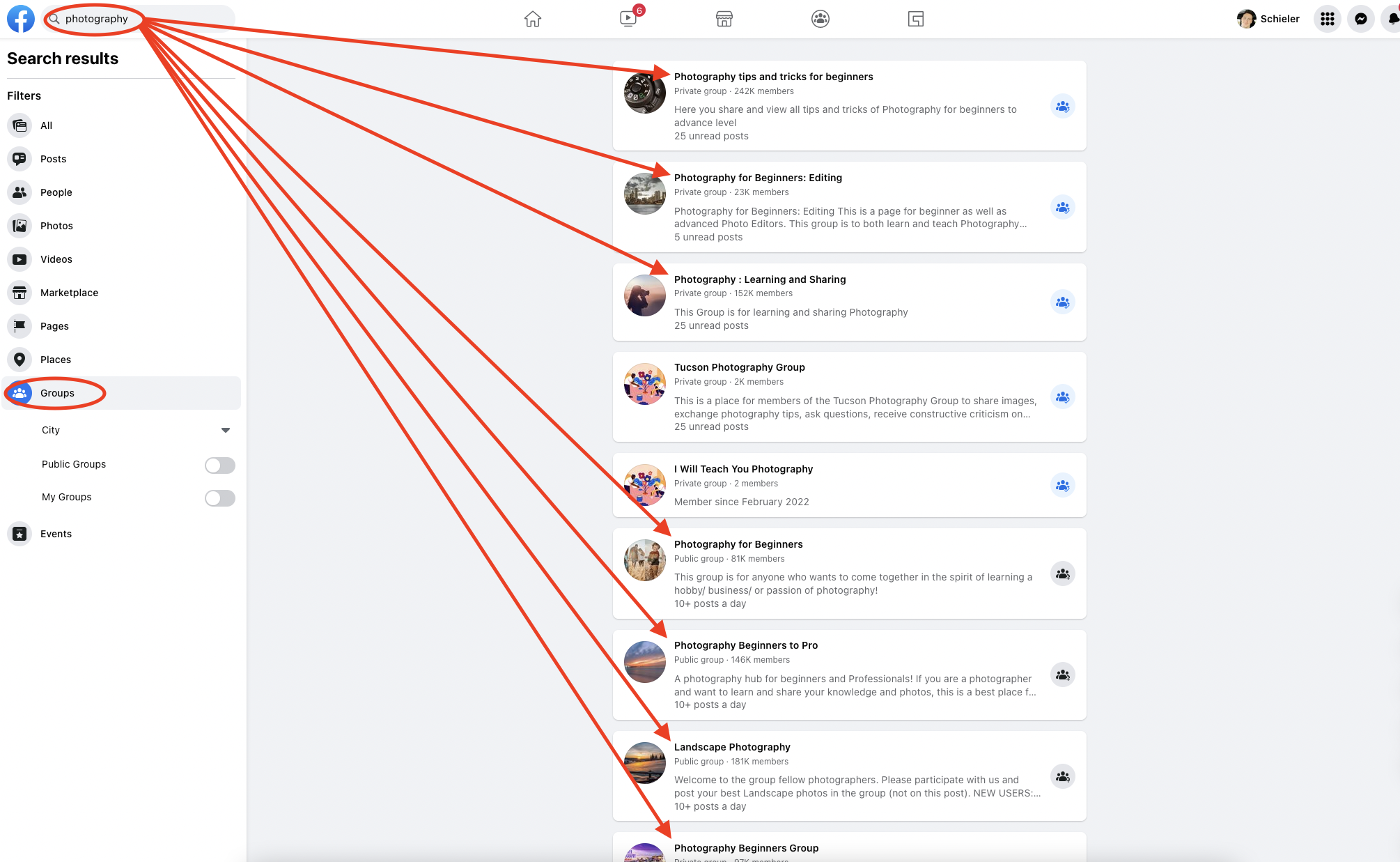
Now, it’s time to preform term frequency analysis to see which words come up the most! For this we need to head over to the following website by clicking here!
From this tool you will copy and paste your list into the text field and then select “Count”!
Note: this tool is also great for preforming term frequency analysis on website pages when preforming competitor analysis for SEO projects!
Now that you are looking at a screen similar to below, it’s time to create your Facebook Group Name!
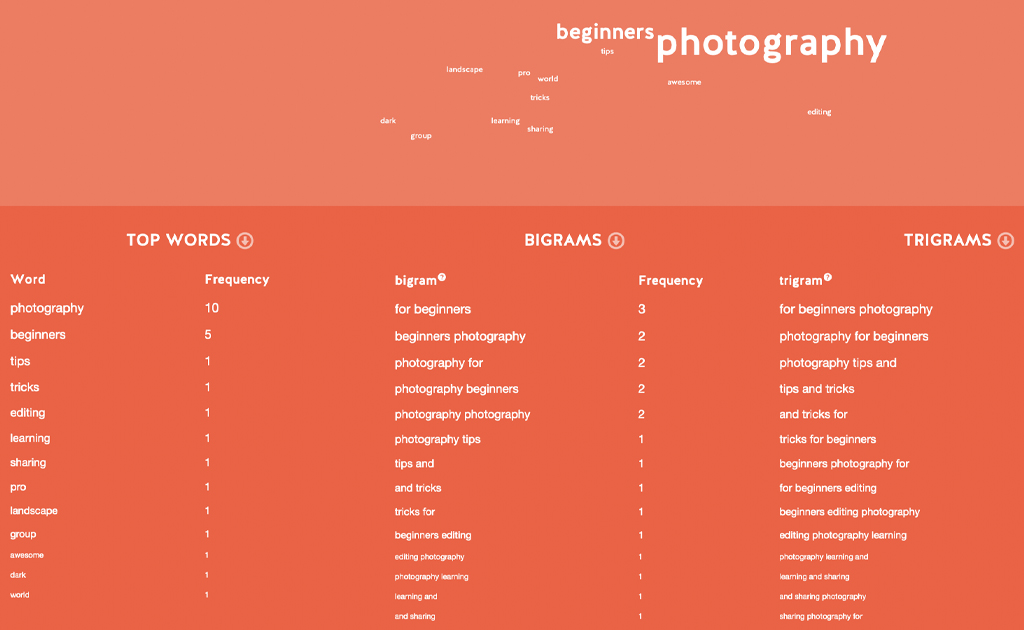
Example of good names that use the following term frequency:
Photography Tips and Tricks for Beginners
Photography Lovers Tips and Tricks for Beginners
Pro Tip: If you search Hashtags on Facebook and find one that gets used a lot, try incorporating it into your Facebook Group name in addition to the process above.
For example in the picture below, we see #photographylover is used frequently and has 214k people posting about it!
Because of this, we incorporated it as a suggestion into the name above!
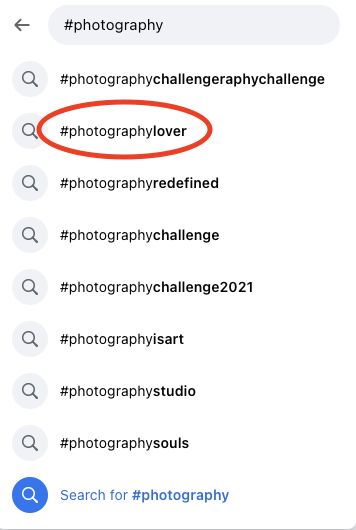
Creating Your Group Description For The Algorithm
Now that we’ve generated a name, it’s time to create a description, and provide an interlinking structure from your description to tell Facebook your similar to other groups!
So, how does one do these two things? Easy!
- Again identify your niches primary (seed) keyword.
- Head over to Facebook and type your primary keyword into the search bar, and then filter by groups!
- After you have done this, make a list in your text editor of choice that contains the top 10 largest group descriptions in acceding order, while skipping small and local groups. Note, you may have to go to each group to get the full description!
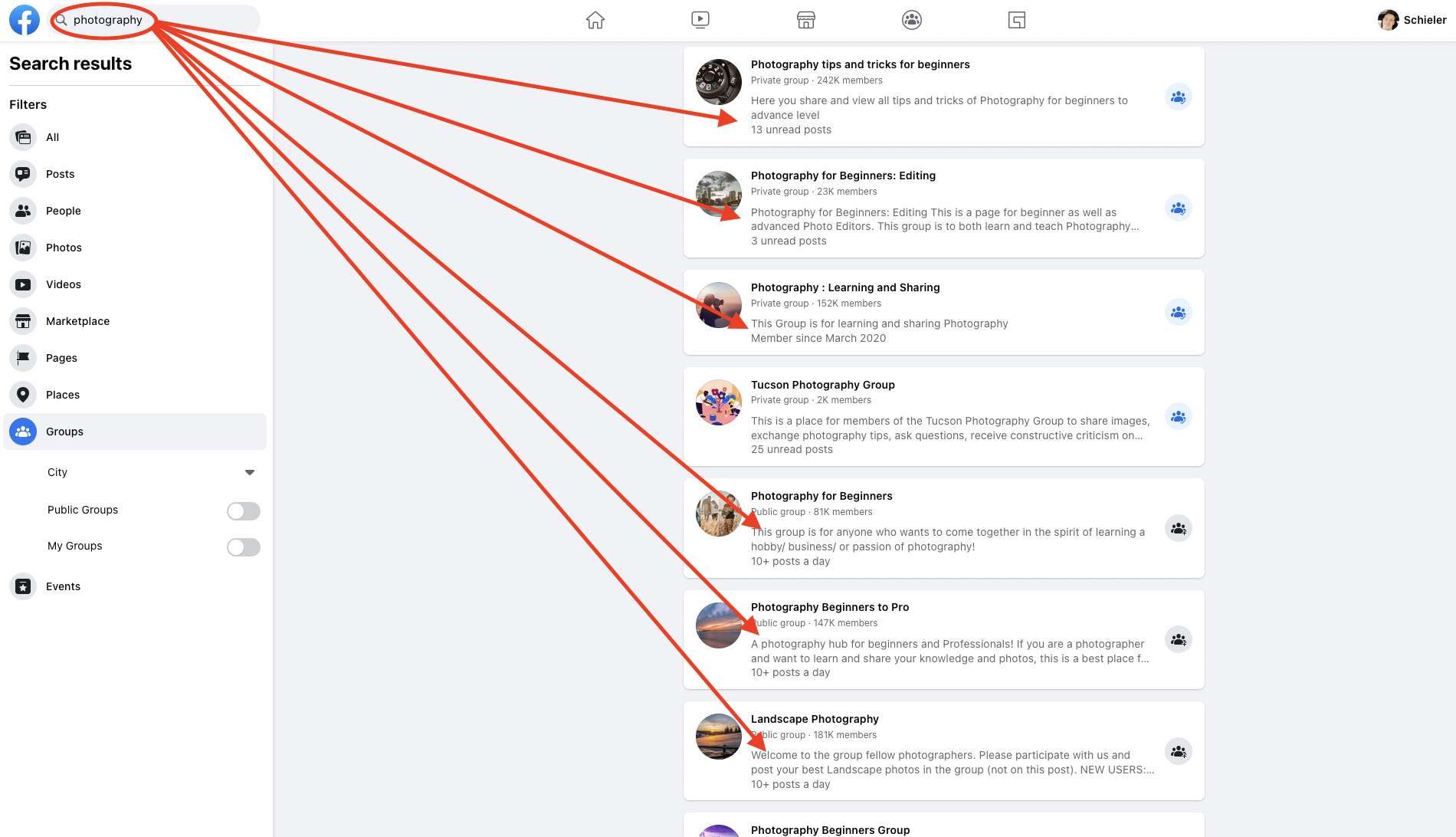
Know what’s next? You guessed it! I’s time to preform term frequency analysis to see which words come up the most! For this we need to head over to the following website by clicking here!
From this tool you will copy and paste your descriptions into the text field and then select “Count”!
After this is complete you will again have a list of the most common words to help create your description from!
Here’s a screenshot of what you will see after preforming an analysis using the above steps.
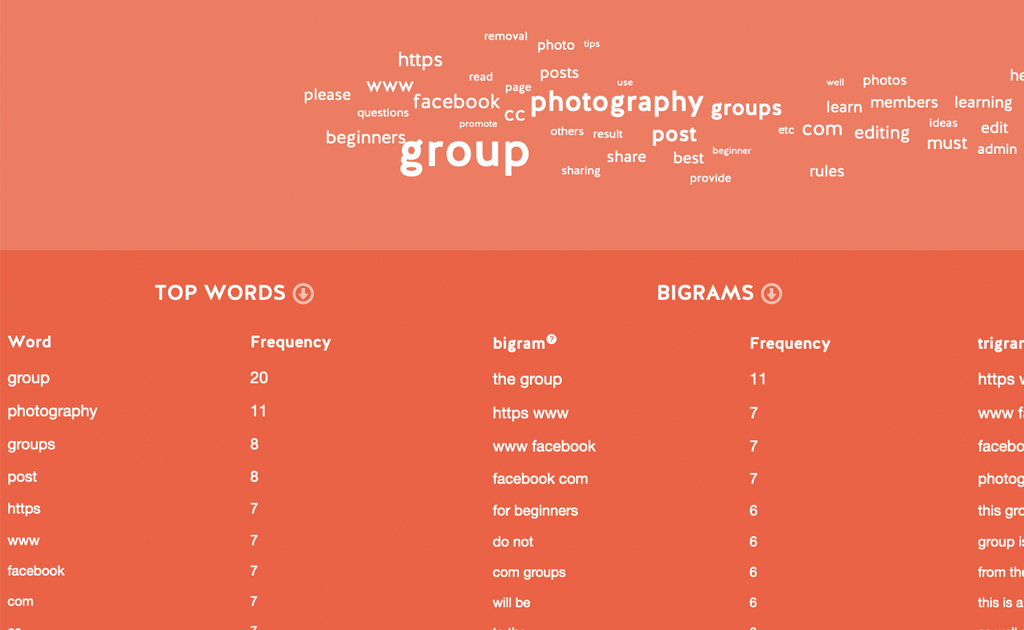
But wait don’t create a description yet, we’re going to take it one step further!
Next, we need to again search our entity and then look at the related searches pulled back by Facebook!
To do this, we will just scroll further down after searching until we reach the area in the screenshot below.
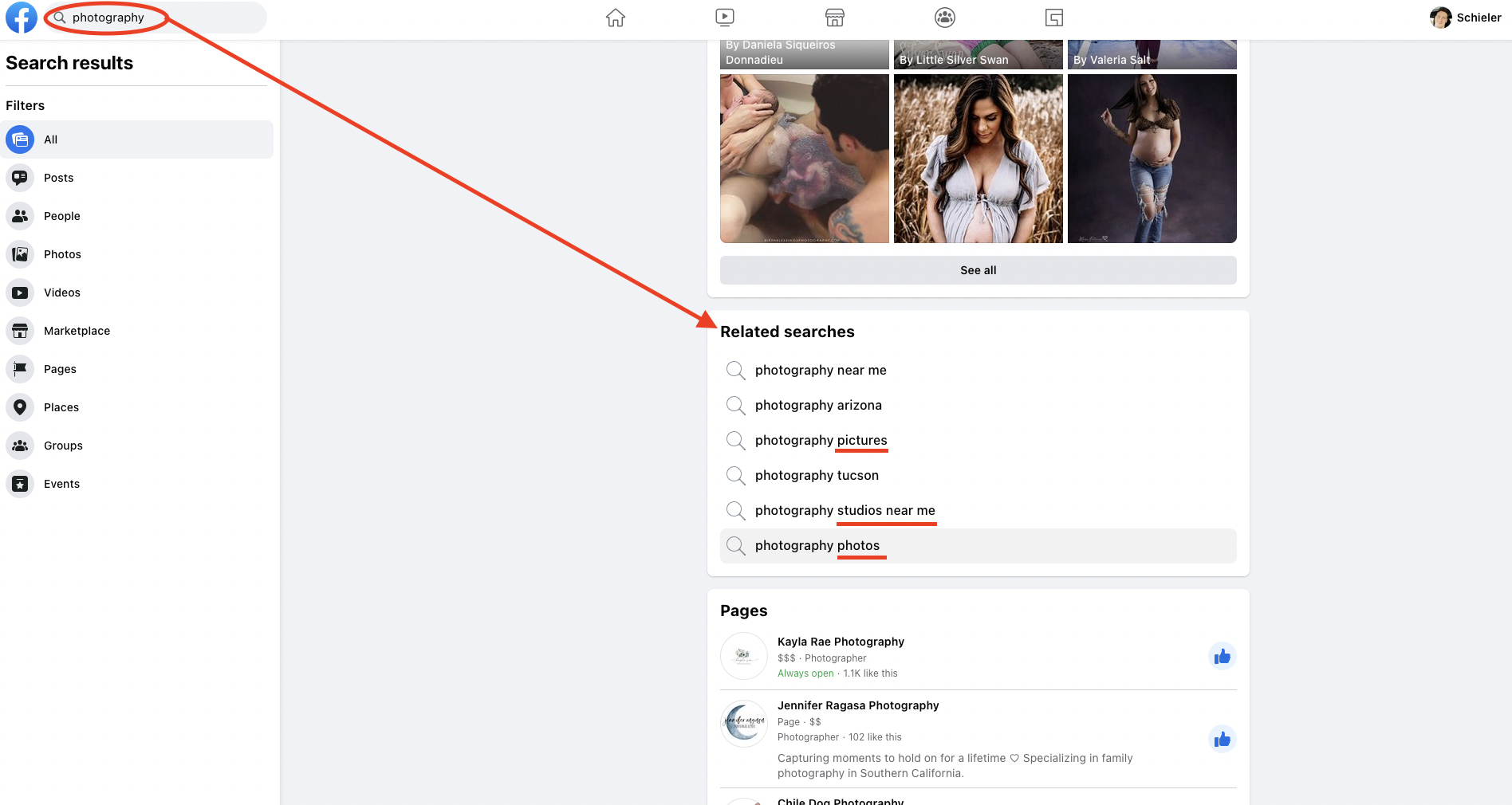
Now, let’s right a description using all the above information!
It may look something like:
Photography Lovers Tips and Tricks for Beginners is Facebooks #1 group for beginners wanting to learn how to take and edit their photography photos!
Whether you have a photography studio near you, own one, or use the world as your canvas, our group is aimed at teaching you how to get the most out of your camera in every scenario!
Other groups you may enjoy!
(insert link to group here)
Because Facebook is a social platform, creating interlinking structures between groups will help you get into “Recommended group carousels” for the groups you interlink to, thus increasing your total vision across Facebook for like-audiences!
More on this to follow!
Earning Social Interactions & Adding Mutual Friends
Now that we have our group name and description sorted, it’s time to build our look-a-like audience that we want to target for our group!
How do we do that?
The first step is by getting invited, joining or becoming a member of any larger Facebook group that has your exact target audience.
Remember the ones we added into the description? This is a great place to start, along with any other substantially sized group!
Once inside of these groups there’s two things we need to accomplish before we can begin growing ours.
- We need to earn a great deal of interactions through content that is already posted inside of the group!
- And 2 we need to begin the process of earning as many friends as possible from inside of the group, as well as the administrators and moderators!
To do this, you will need a great deal of knowledge and expertise in the arena that coincides with your niche, and this can not be faked.
People thrive on advice, compliments, social engagement and interactions on their posts – and it’s your job to earn the communities up-votes through “Likes” and “Responses”.
In addition, as a personal recommendation, make sure to always take the high-road when conversations become strained or turn into debates.
If your goal is to always grow your group, arguing with people and earning blocks placed on your account limits your overall reach!
So, what do these types of interactions look like? They are usually long form responses that are informative, educational, and are actionable today for your like audiences!
In essence, they act as a “loss-leader” or “foot-in-the-door” approach to help you substantiate your own authority in your desired field, and they help others find value in what you’re providing.
At the end of the day, it’s important to remember when creating a group that all your like audience cares about is “What’s in it for them”, and until you meet this need they do not care about what’s in it for you!
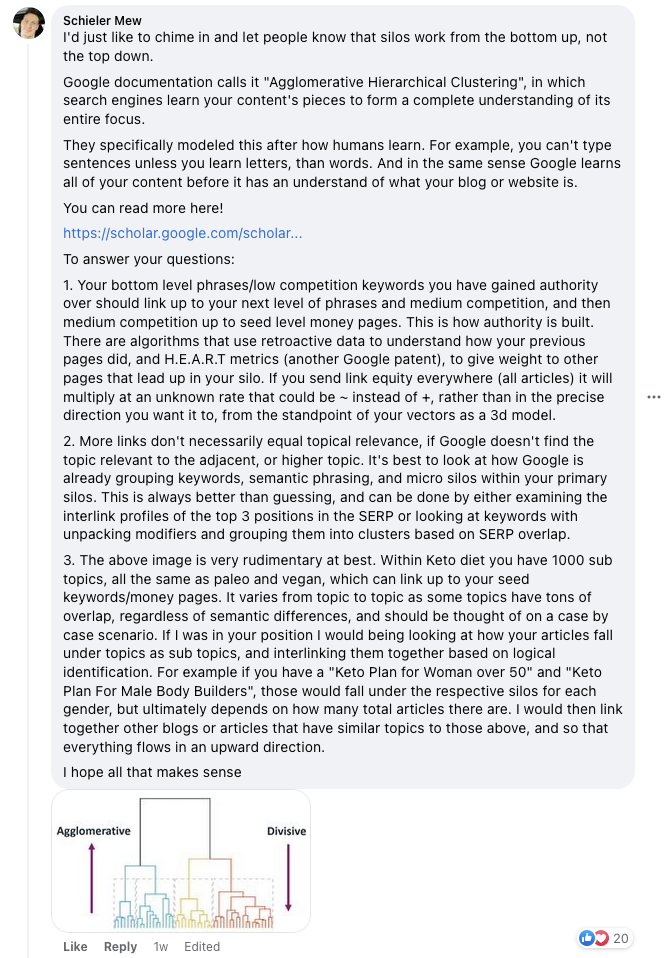
In addition to the above, there is also a formula you should be following for how often you post in your group, versus other groups you want to obtain a look-a-like audience from!
In general, for every one post you create in your group you need to create 5 other posts or response posts in other groups.
Facebooks algorithms are set up to reward those who actively participate around it’s platform and earn the social interactions we talked about above.
While it would make sense to focus more on and in your group, it has to be done at the ratio discussed above, or your group will stop seeing new add requests as a secondary result of not coming up in recommended group carousels.
